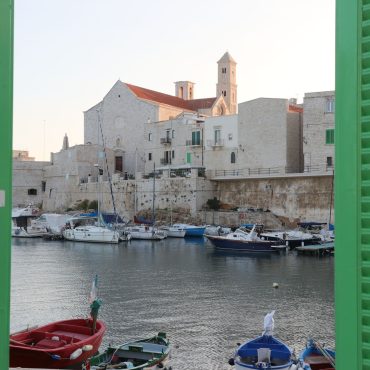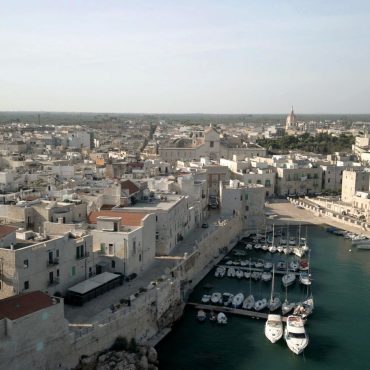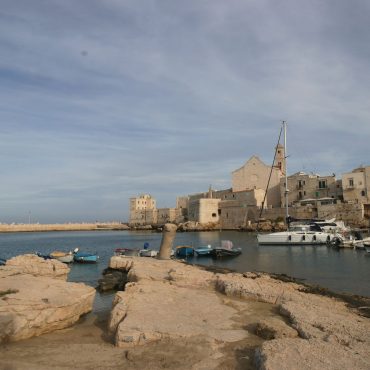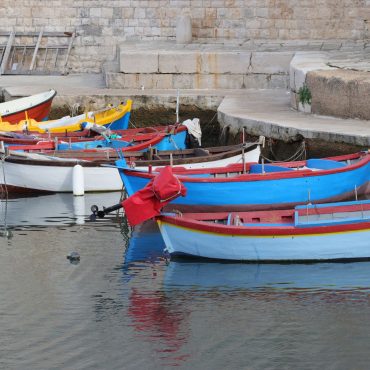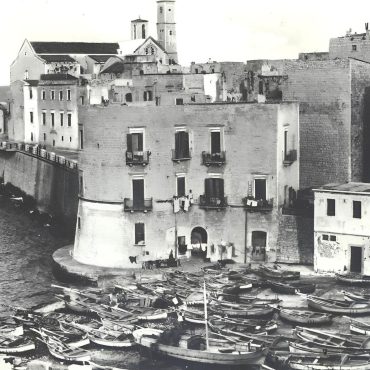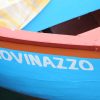
Piazza porto and cala porto
In a not too distant past, the square in front of the port was full of life, animated by the families of fishermen and sailors. At dawn, when the sea mist still clung to the coast, the men of the sea gathered at the “Caffè Marittimo”, a meeting point managed by the Carlucci family. Over a coffee and a chat the men prepared themselves to face the day’s challenges. There was no rest for the women of the neighbourhood, wrapped in their shawls they took care of the house and the children and made their way through the narrow streets of the town with baskets full of fresh fish.
When storms hit the coast, the water covered the streets and penetrated into the ground floor of the houses, leaving an unmistakeable briny smell. Children would play in the streams of water which seeped under the doors, as if the sea wanted to come into their houses and daily lives. In the evening, the fishermen would relax and mend their torn nets, a job requiring the patience and skill of expert hands. The sea was the centre of the universe for these people, a world of wind, brine and whispers of the waves.
Today, the port retains its evocative beauty and colourful boats but between the 10th and 11th centuries it was a well-equipped arsenal from which courageous sailors set sail, well-known all over the Mediterranean. Between the 16th and 17th centuries the port was a crucial crossroads for trade with routes heading mainly to Venice. To protect the port from enemy attack the local people installed a long chain of bells under water to warn of imminent danger.
The ancient Eastern walls which once protected the port were lowered to create the Via Marina walkway, offering a spectacular view of the port. The tower of the port, affectionately known as “U tammurre” remains almost intact. Built in 1488 by Duke Alfonso of Aragon, this ancient bastion still guards the entrance to the port as it has for centuries, telling the tales of sea and stone meeting in an endless dance.
